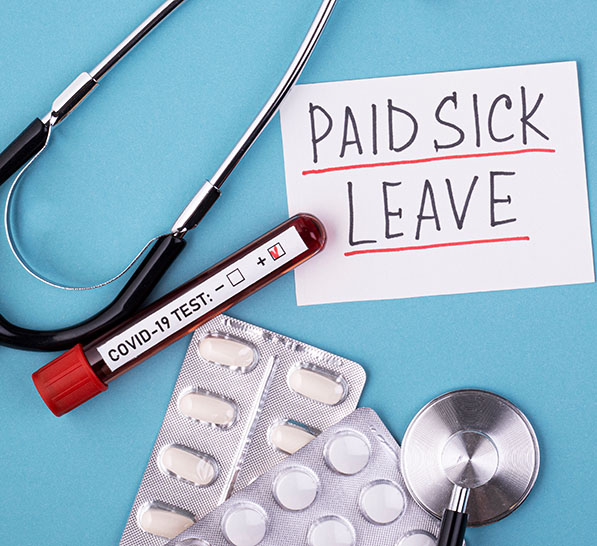In 2021, the California Legislature passed a paid sick leave law that supplemented the existing state paid sick leave law — it required employers with 26 or more employees to provide up to 80 hours of paid sick leave for qualifying COVID-19-related reasons. This supplemental paid sick leave (SPSL) mandate expired on September 30, 2021, and was not replaced by any additional leave.
This year, the legislature is revisiting SPSL by introducing Senate Bill (SB) 114 as a new leave mandate for 2022. Although many details are similar to 2021’s leave, there are some differences. Please keep in mind that SB 114 is just a legislative proposal; no law is currently in place, and SB 114 may be subject to change.
The proposed 2022 SPSL covers employers with 26 or more employees and will provide a new bank of up to 80 hours for qualifying reasons. An employee’s leave bank is based on their ordinary scheduled workweek with a maximum of 40 hours. An employee qualifies for up to 40 hours of SPSL if they’re unable to work or telework due the following:
- The employee is subject to a quarantine or isolation period related to COVID-19 as defined by an order or guidance from the State Department of Public Health, the federal Centers for Disease Control and Prevention, or a local public health officer who has jurisdiction over the workplace.
- The employee has been advised by a health care provider to isolate or quarantine due to COVID-19.
- The employee is experiencing symptoms of COVID-19 and seeking a medical diagnosis.
- The employee is caring for a family member who’s subject to a government quarantine, isolation order or guidance; or who has been advised by a health care provider to isolate or quarantine.
- The covered employee is caring for a child, as defined in subdivision (c) of Section 245.5, whose school or place of care is closed or otherwise unavailable for reasons related to COVID-19 on the premises.
An employee may then qualify for up to another 40 hours if the employee tested positive for COVID-19 or is caring for a family member who tested positive. If the employee requests this second 40-hour bank, an employer may require testing on day 5 after the initial positive test. If an employee is caring for a family member and requests this second 40-hour bank, an employer may also require the employee to produce the family member’s positive test. If the employee refuses to test or disclose tests, they are not entitled to this second bank.
An employee may also qualify for SPSL if:
- The employee is attending an appointment for themselves or a family member to receive a vaccine or a vaccine booster for protection against COVID-19.
- The employee is experiencing symptoms, or caring for a family member experiencing symptoms, related to a COVID-19 vaccine or vaccine booster that prevent the employee from working or teleworking.
An employee may be limited to 24 hours of SPSL for these reasons — unless the employee provides a medical certification for more time. The limitation is for each vaccine or booster shot.
SPSL most commonly will be paid at the employee’s regular rate of pay, but there is a second option to pay based upon a 90-day lookback method, which is consistent with California’s regular paid sick leave. SPSL may be capped at $511 per day and $5,110 in total for each employee. Unfortunately, at this time no tax credits are available to directly offset this leave.
The SPSL is retroactive to January 1, 2022, so an employee may retroactively request leave for any of the above qualifying reasons that have occurred since January 1, 2022.
Lastly, employers will be required to:
- Create a separate line on an employee’s wage statement that reflects how much leave the employee has used thus far; and
- Post in the workplace a notice that will be released by the Division of Labor Standards within seven days of this law’s effective date.
If SB 114 is passed and signed into law, it will take effect 10 days from the signature date.
Matthew J. Roberts, Employment Law Counsel/Subject Matter Expert
CalChamber members and nonmembers can read more about COVID-19: Federal, State and Local Leave Issues in the HR Library. Like what you see? See how CalChamber can help you.




